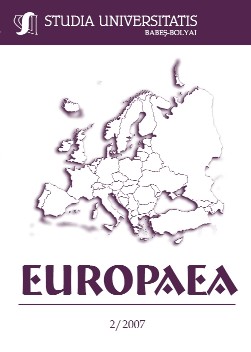What is the Future of the Visegrad Group as an Example of Regional Cooperation
What is the Future of the Visegrad Group as an Example of Regional Cooperation
Author(s): Anna Sylwia CzyżSubject(s): Cultural Essay, Political Essay, Societal Essay
Published by: Studia Universitatis Babes-Bolyai
Summary/Abstract: After the fall of communism in 1989 Central and Eastern European countries started to change their political systems towards democracy. They also had to define their main aims in foreign policy. In 1991 Czechoslovakia, Hungary and Poland decided to create the Visegrad Triangle to be able to develop and to become members of the North Atlantic Treaty Organization and European Union. After dissolution of Czechoslovakia their mutual initiative was called the Visegrad Group. During nineties XX century this regional co-operation between Czech Republic, Hungary, Poland and Slovakia experienced different vicissitudes. Finally their dream about integration came true- they became the part of Western organizations. So now when they reached their most important goals they have to determine the direction of mutual co-operation. As neighbouring countries with similar historical tradition and thinking they can search together for the solution of current problems in Europe.
Journal: Studia Universitatis Babes-Bolyai - Studia Europaea
- Issue Year: 52/2007
- Issue No: 2
- Page Range: 131-144
- Page Count: 13
- Language: English

